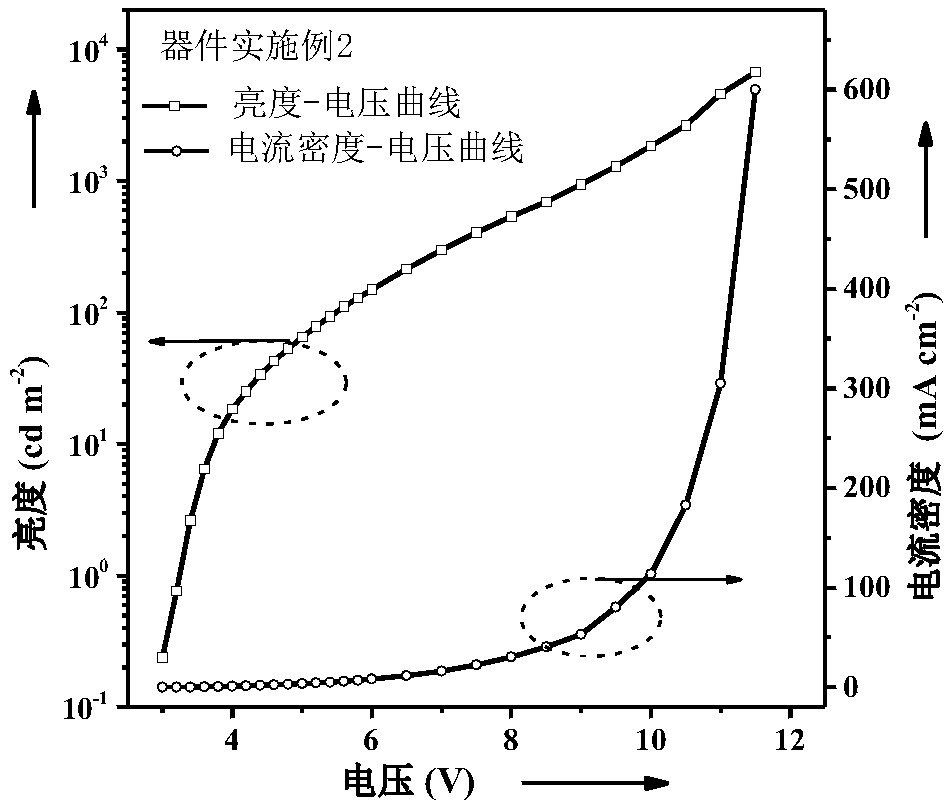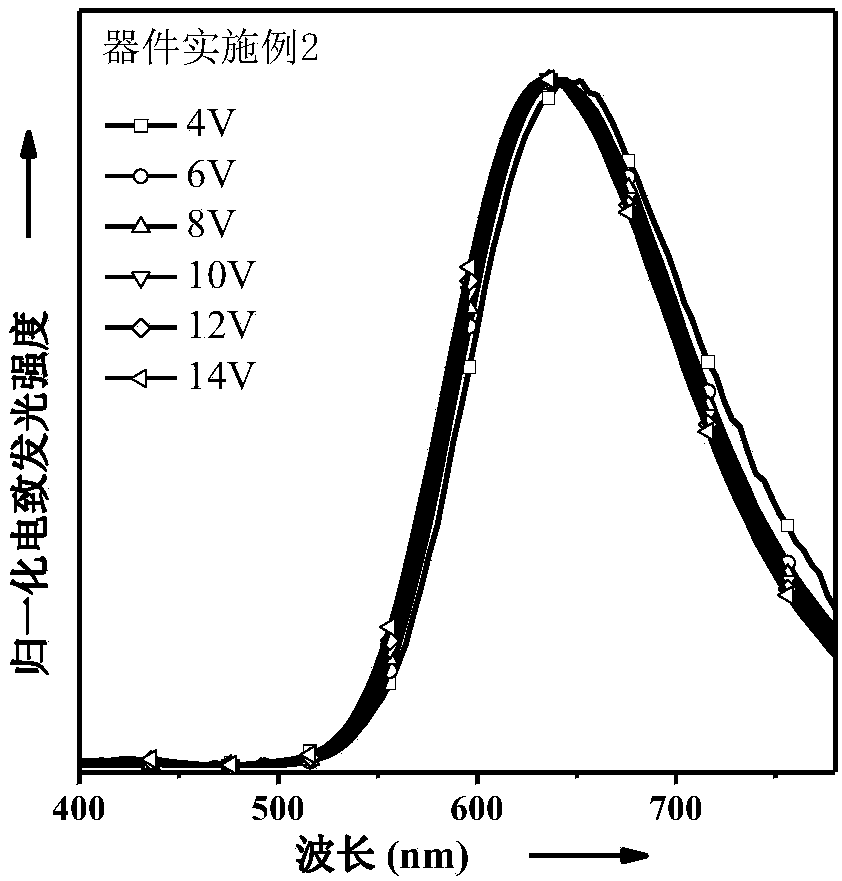Organic red light micromolecule based on feidazole-trans-diphenyl dicyanide ethylene and preparation method and application thereof
A technology of diphenyl dicyanoethylene and phenanthroimidazole is applied in the application field of electroluminescent devices, which can solve the problems of luminous performance such as efficiency, service life, color purity, and carrier injection/transmission backward.
- Summary
- Abstract
- Description
- Claims
- Application Information
AI Technical Summary
Problems solved by technology
Method used
Image
Examples
Embodiment 1
[0070] The preparation of the present embodiment PIDPh comprises the following preparation steps:
[0071] Synthesis of intermediate 2-(4-bromobenzene)-1-phenyl-3a,11b-dihydro-1H-phenanthrene imidazole (PPIBr):
[0072] PPIBr was prepared by a one-pot method. In a 500mL round bottom flask, 9,10-phenanthrenequinone (40mmol, 8.32g), p-bromobenzaldehyde (40mmol, 7.33g), aniline (200mmol, 18.1mL), ammonium acetate (160mmol, 12.33g) were dissolved in In 200mL of glacial acetic acid, stirred and refluxed at 120°C for 4h under nitrogen protection. After the reaction was completed, the reaction system was poured into 100 mL of ice water, and a large amount of precipitates appeared instantly. After suction filtration, the resulting solid was separated and purified by column chromatography (petroleum ether:dichloromethane=1:2, volume ratio) to obtain a white solid (16.3 g, yield: 91%). Mass Spectrum MALDI-TOF(m / z)[M + ]: The test value is 448.74, and the theoretical value is 448.06....
PUM
 Login to View More
Login to View More Abstract
Description
Claims
Application Information
 Login to View More
Login to View More - R&D Engineer
- R&D Manager
- IP Professional
- Industry Leading Data Capabilities
- Powerful AI technology
- Patent DNA Extraction
Browse by: Latest US Patents, China's latest patents, Technical Efficacy Thesaurus, Application Domain, Technology Topic, Popular Technical Reports.
© 2024 PatSnap. All rights reserved.Legal|Privacy policy|Modern Slavery Act Transparency Statement|Sitemap|About US| Contact US: help@patsnap.com










